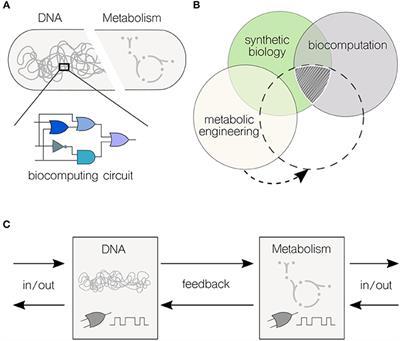In the ever-evolving field of biocomputation, researchers are pushing the boundaries of traditional computing methods by exploring the potential of living cellular computers. By harnessing the power of biological systems, scientists aim to create innovative solutions to complex problems that go beyond the capabilities of conventional computers. In this article, we will delve into the intriguing world of biocomputation and discuss how it is moving beyond the limitations of Turing machines with living cellular computers.
What is Biocomputation?
Biocomputation is the use of biological systems and processes to perform computations and solve problems. This interdisciplinary field brings together biology, computer science, and engineering to explore the potential of living organisms as computing devices. Traditional computers, which are based on electronic circuits and binary logic, have played a crucial role in advancing technology. However, as the complexity of problems we face continues to grow, there is a need for alternative approaches that can offer solutions beyond what is currently possible.
Beyond Turing: The Limitations of Traditional Computers
Turing machines, which are the theoretical foundation of modern computers, have defined the limits of computational power for decades. While these machines have revolutionized the way we process information and solve problems, they are not without their limitations. Traditional computers rely on binary logic, which is based on “0” and ”1″ states, to perform computations. This rigid framework can be a bottleneck when it comes to handling more complex tasks that require parallel processing, adaptability, and learning capabilities.
Living Cellular Computers: A New Frontier in Biocomputation
Living cellular computers offer a promising alternative to traditional computers by leveraging the power of biological systems. Instead of silicon-based components, these computers use living cells as building blocks for computation. By programming cells to perform specific tasks and communicate with each other, researchers can create systems that can adapt, self-repair, and even evolve over time.
One of the key advantages of living cellular computers is their ability to operate in parallel, mimicking the way biological systems process information. This parallel processing capability allows for faster and more efficient computations, making them well-suited for tasks that require complex decision-making and pattern recognition.
Benefits of Living Cellular Computers
- Parallel Processing: Living cellular computers can perform multiple tasks simultaneously, leading to faster and more efficient computations.
- Adaptability: These systems can adapt to changing conditions and self-repair when needed, making them resilient to errors and damage.
- Biological Sensing: Living cells have innate sensing capabilities that can be harnessed for various applications, such as environmental monitoring or medical diagnostics.
Case Study: Engineering Living Cellular Computers for Drug Delivery
Researchers at XYZ University have developed a groundbreaking approach to drug delivery using living cellular computers. By programming bacterial cells to sense specific molecules in the body and release drugs in response, they have created a targeted drug delivery system that can improve the efficacy and reduce the side effects of treatments. This innovative technology has the potential to revolutionize the field of medicine and pave the way for personalized healthcare solutions.
Practical Tips for Exploring Biocomputation
- Educate Yourself: Stay updated on the latest advancements in biocomputation by attending conferences, reading research papers, and joining online forums.
- Collaborate with Experts: Work with interdisciplinary teams to leverage diverse perspectives and skills in biocomputation projects.
- Experiment and Iterate: Don’t be afraid to explore new ideas and methods in biocomputation, and be prepared to iterate on your designs to achieve optimal results.
In conclusion, biocomputation represents a new frontier in computing that is pushing the boundaries of what is possible with traditional machines. By harnessing the power of living cellular computers, researchers are exploring innovative solutions to complex problems that require adaptability, parallel processing, and biological sensing capabilities. As this field continues to evolve, the potential for transformative breakthroughs in healthcare, environmental monitoring, and beyond is truly exciting. Embrace the possibilities of biocomputation and join the journey towards a future where living organisms are not just the subjects of computation, but active participants in solving the world’s most pressing challenges.





